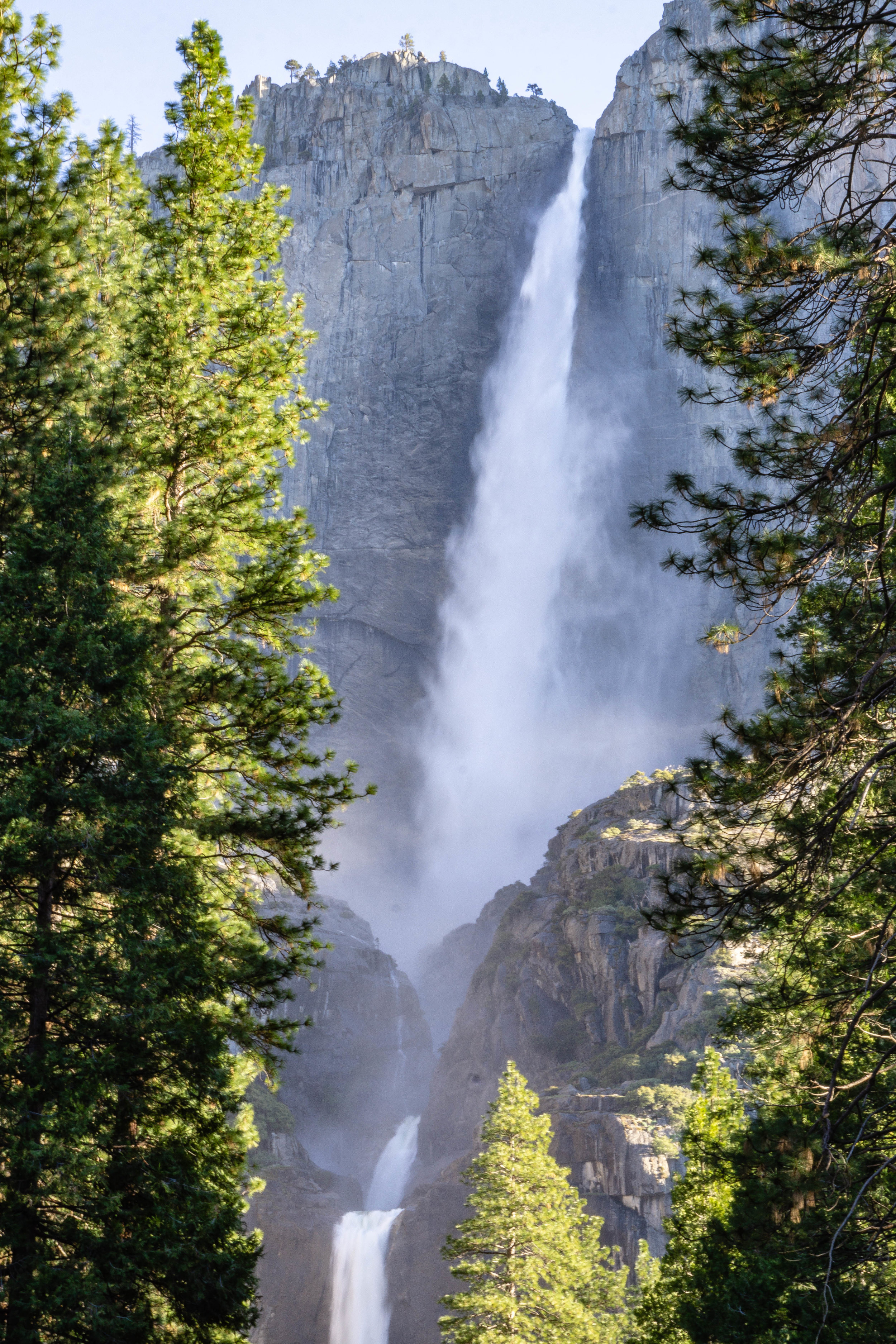Yosemite National Park in California is renowned for its stunning landscapes, diverse wildlife, and iconic natural features that are all listed as “The Best Hikes in America” but is that really the case. Among these features, Yosemite Falls stands out as one of the park's most impressive attractions and hikes, yet, the hike to the summit of Yosemite Falls is difficult and very popular. Attracting visitors from around the world to flock to the vista for a selfie. So, the question must be asked, “Is hiking Yosemite Falls worth it?”
Yosemite Falls from Yosemite Valley floor. Photo by Dalton Johnson
PROS:
Spectacular Scenery: The Yosemite Falls hike offers unparalleled views of the majestic waterfall, which plunges a total of 2,425 feet in three distinct sections. The sight of water cascading down the granite cliffs is awe-inspiring and makes the challenging hike worthwhile.
Natural Diversity: Along the trail, hikers can experience the park's diverse ecosystems, from lush forests to rocky terrain. This variety adds to the adventure and allows hikers to appreciate the park's rich biodiversity.
Sense of Accomplishment: Completing the Yosemite Falls hike is a rewarding experience that instills a sense of accomplishment. The steep ascent and rugged terrain test hikers' endurance, making reaching the top a fulfilling achievement.
Photo Opportunities: The hike provides numerous photo opportunities, allowing hikers to capture the beauty of Yosemite National Park from different vantage points. The views of the waterfall, surrounding landscapes, and wildlife make for stunning photographs.
Iconic Landmark: Yosemite Falls is not only a natural wonder but also an iconic landmark of the park. Hiking to the base or even to the top of the falls allows visitors to connect with the park's history and significance.
CONS:
Crowds: During peak season, the Yosemite Falls trail can be crowded with tourists and hikers. This popularity can detract from the serenity of the hike and may require patience when navigating the trail.
Physical Challenge: The hike is rated as strenuous due to its steep inclines and rocky terrain. It requires a reasonable level of fitness and stamina, which may not be suitable for everyone.
Weather Conditions: Yosemite's weather can be unpredictable, especially at higher elevations. Hikers should be prepared for changes in weather, including sudden rain or snow, which can impact the hiking experience.
Limited Accessibility: Parts of the Yosemite Falls trail may be inaccessible to individuals with mobility issues or disabilities due to the rugged nature of the terrain.
A Quick Intro To Yosemite Falls
Yosemite Falls is a sight to behold, towering over the Yosemite Valley and captivating visitors with its sheer size and power. The waterfall is actually comprised of three sections: the Upper Falls, the Middle Cascades, and the Lower Falls. The Upper Falls alone drops approximately 1,430 feet, making it one of the tallest waterfalls in North America. As hikers ascend the trail, they are treated to ever-expanding views of this natural wonder, with each viewpoint offering a new perspective and photo opportunity.
Trail Overview
The Yosemite Falls trail is a challenging yet rewarding endeavor, typically taking about 6 to 8 hours round trip for the full hike to the top of the falls and back. The trail begins near Yosemite Valley Lodge and steadily climbs through switchbacks and rocky terrain. While the initial part of the hike is relatively shaded and forested, hikers soon emerge into more open areas with expansive views of the valley below.
As the trail continues, hikers pass by Columbia Rock, a popular stopping point with panoramic vistas of Yosemite Valley and Half Dome. From there, the trail becomes steeper and more strenuous, especially as hikers approach the final push to reach the top of Yosemite Falls. The last section involves climbing granite steps and may require some scrambling, adding to the adventure and sense of accomplishment upon reaching the summit.
Seasonal Considerations
The best time to hike Yosemite Falls depends on individual preferences and weather conditions. Spring is often recommended for witnessing the waterfall at its peak flow, fueled by snowmelt from the surrounding mountains. However, this also means higher water levels and potentially wetter trail conditions. Summer offers warmer weather and longer daylight hours but can be crowded, especially on weekends and holidays. Fall brings cooler temperatures and beautiful foliage, while winter transforms the landscape with snow and ice, creating a different kind of beauty but also requiring extra caution on the trail.
Wildlife Encounters
Yosemite National Park is home to a diverse array of wildlife, and hikers on the Yosemite Falls trail may encounter various species along the way. Common sightings include mule deer, squirrels, and a variety of bird species. More elusive animals such as black bears and mountain lions also inhabit the park but are less frequently seen. Hikers should be aware of wildlife safety precautions, such as storing food properly and making noise while hiking to avoid surprising animals.
Yosemite Falls three drops easily seen during high flow. Photo by Dalton Johnson
The Yosemite Falls hike offers a captivating blend of natural beauty, adventure, and challenge. While it may not be suitable for everyone due to its physical demands and potential crowds, those who embark on the journey are rewarded with unforgettable experiences and breathtaking views. Whether it's capturing the roar of the waterfall on camera or simply immersing oneself in the tranquility of Yosemite's wilderness, the Yosemite Falls hike is undoubtedly worth considering for outdoor enthusiasts and nature lovers seeking memorable adventures.






